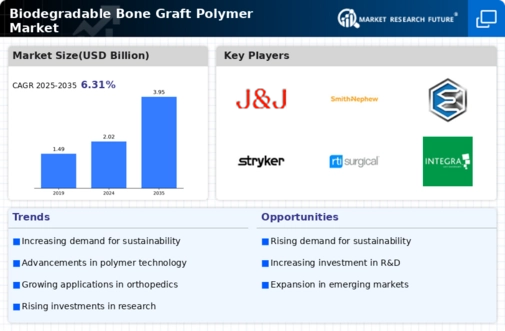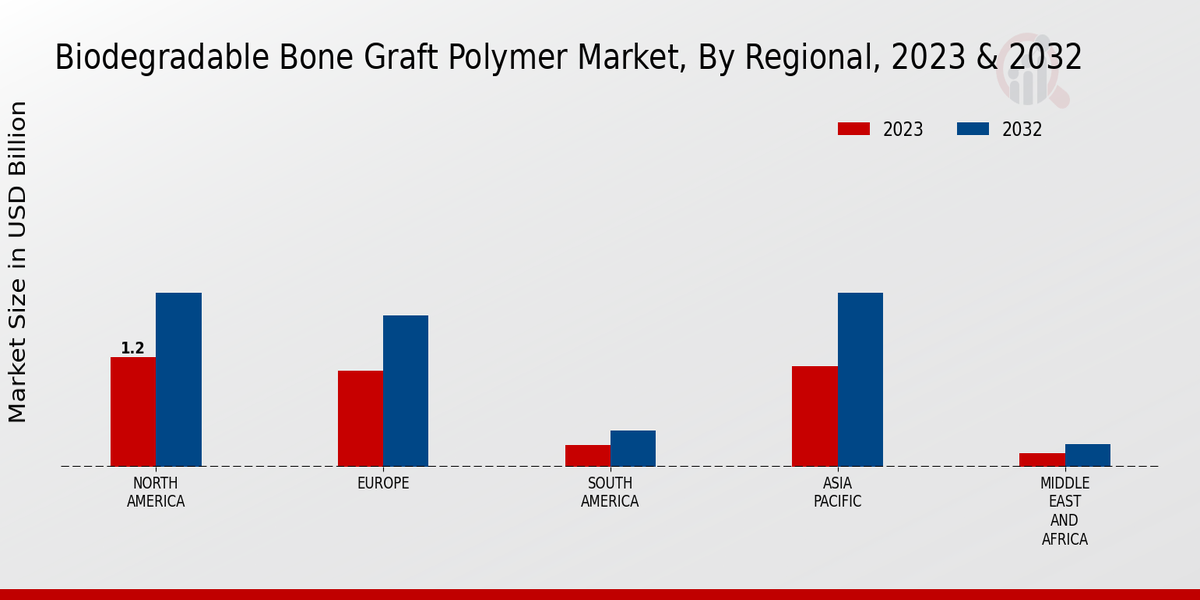Market Growth Projections
Market growth projections for the Global Biodegradable Bone Graft Polymer Market Industry indicate a promising trajectory. With a market value expected to reach 2.02 USD Billion in 2024 and 3.95 USD Billion by 2035, the industry is poised for substantial expansion. The anticipated compound annual growth rate of 6.3% from 2025 to 2035 reflects the increasing adoption of biodegradable polymers in various medical applications. This growth is likely driven by advancements in material science, rising healthcare demands, and a shift towards sustainable practices in the medical field. Such projections highlight the potential for innovation and investment in biodegradable bone graft technologies.
Government Initiatives and Funding
Government initiatives and funding play a pivotal role in the Global Biodegradable Bone Graft Polymer Market Industry. Various health authorities and organizations are increasingly investing in research and development to promote the use of biodegradable materials in medical applications. These initiatives aim to enhance patient care and reduce healthcare costs associated with long-term implant maintenance. For instance, funding programs that support innovative research in biodegradable polymers can lead to breakthroughs in material performance and application. Such governmental support is likely to foster market growth, ensuring that advancements in technology align with public health objectives.
Increasing Incidence of Bone Disorders
The Global Biodegradable Bone Graft Polymer Market Industry is propelled by the rising incidence of bone disorders, including osteoporosis and fractures. As the global population ages, the prevalence of these conditions escalates, necessitating effective treatment options. Biodegradable bone grafts offer a promising solution, as they support natural bone healing while reducing the need for secondary surgeries to remove implants. This growing demand is reflected in the anticipated compound annual growth rate of 6.3% from 2025 to 2035, indicating a robust market response to the increasing healthcare needs associated with bone health.
Rising Demand for Biocompatible Materials
The Global Biodegradable Bone Graft Polymer Market Industry experiences a surge in demand for biocompatible materials, driven by the increasing prevalence of orthopedic and dental surgeries. As healthcare professionals prioritize patient safety and recovery, the use of biodegradable polymers that integrate seamlessly with human tissue becomes paramount. For instance, the market is projected to reach 2.02 USD Billion in 2024, reflecting a growing preference for materials that minimize the risk of adverse reactions. This trend suggests a shift towards sustainable practices in medical applications, aligning with global health initiatives aimed at enhancing patient outcomes.
Technological Advancements in Polymer Science
Technological advancements in polymer science significantly influence the Global Biodegradable Bone Graft Polymer Market Industry. Innovations in material synthesis and processing techniques enhance the properties of biodegradable polymers, making them more effective for bone regeneration. For example, the development of novel copolymers and composite materials improves mechanical strength and degradation rates, which are crucial for clinical applications. As these technologies evolve, they are likely to drive market growth, with projections indicating a market value of 3.95 USD Billion by 2035. This evolution underscores the importance of continuous research and development in meeting the demands of modern healthcare.
Growing Awareness of Environmental Sustainability
The Global Biodegradable Bone Graft Polymer Market Industry is influenced by the growing awareness of environmental sustainability. As healthcare providers and patients alike become more conscious of the ecological impact of medical materials, there is a notable shift towards biodegradable options. This trend is driven by the desire to minimize waste and promote sustainable practices within the healthcare sector. The adoption of biodegradable bone grafts not only addresses clinical needs but also aligns with broader environmental goals. This dual focus on health and sustainability is expected to enhance market growth and encourage further innovation in biodegradable materials.























